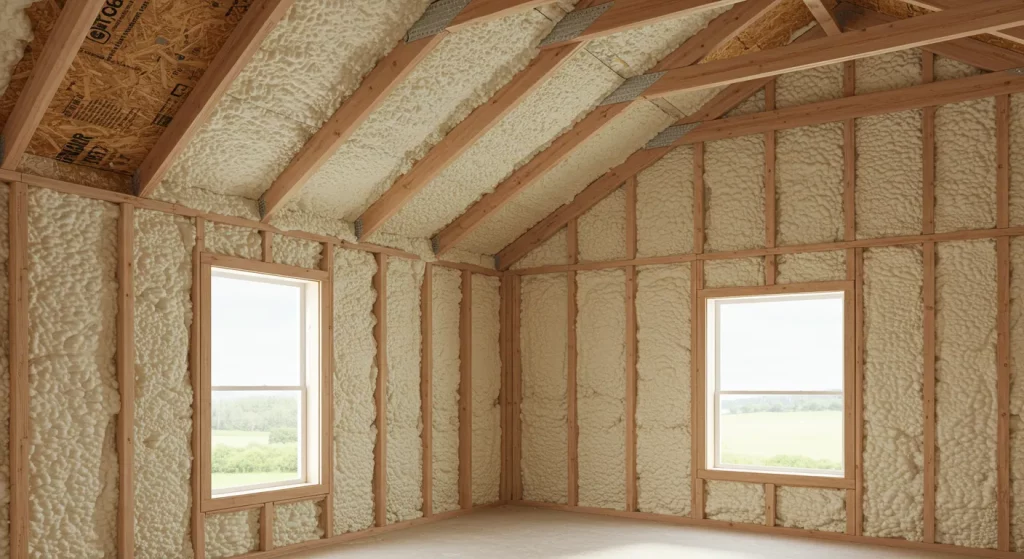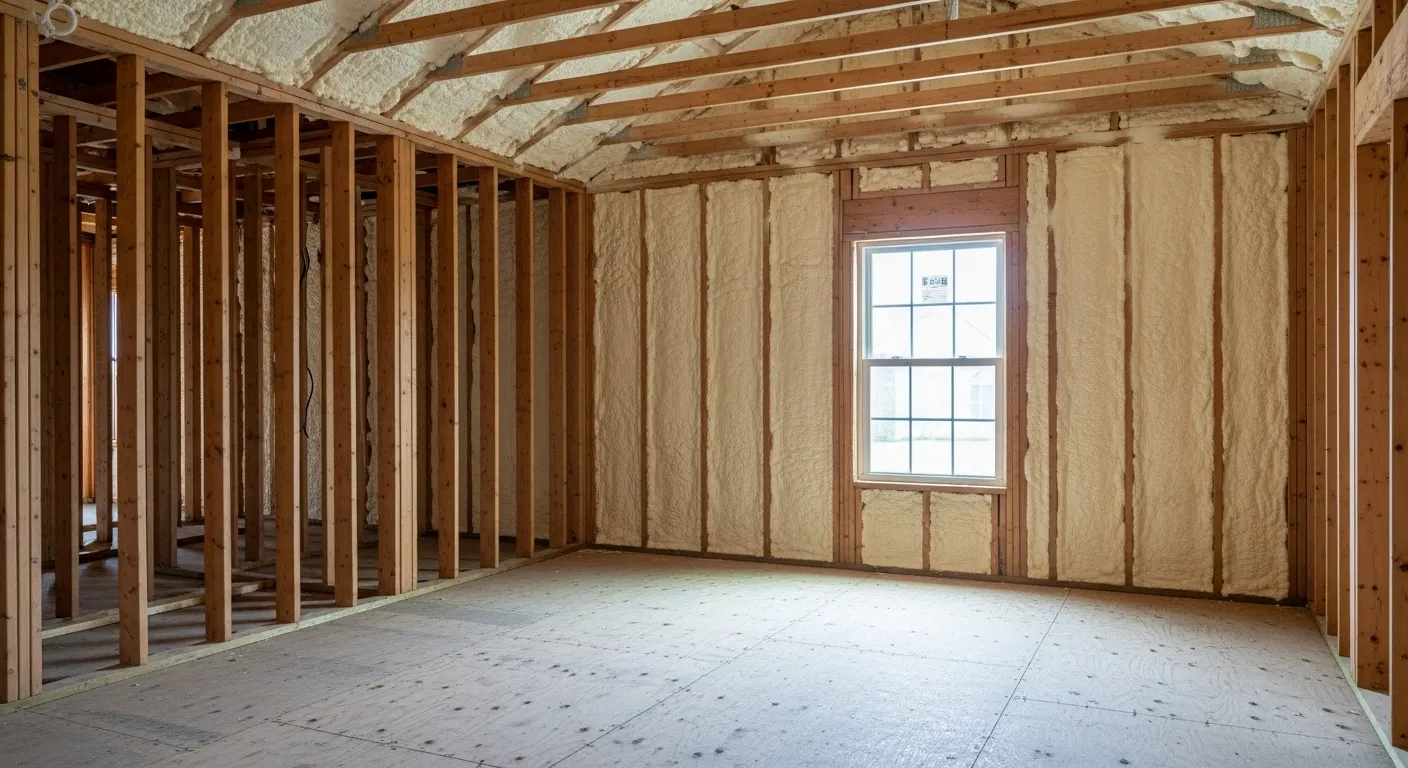Drafts in older homes often stem from gaps around windows, doors, and attics that let cold air seep in during Minnesota winters. The simplest approach to cut these drafts starts with sealing those leaks, then adding targeted best insulation like spray foam, which fills irregular spaces effectively without major renovations. Homeowners in St. James see quick results from this method, as it blocks air movement right at the source and boosts energy efficiency.
This guide breaks down the process step by step, from spotting issues to choosing materials suited to the local climate. Readers gain practical steps based on real-world applications in southern Minnesota, where harsh winds and subzero temperatures demand reliable solutions. Foam Worx Insulation draws from hands-on work in the area to share these details, ensuring trustworthy advice grounded in local conditions. To understand why these drafts occur and how to address them, let’s first explore the common problems in older St. James homes.
Why Older Homes in St. James Face Draft Issues
St. James homes built before the 1980s typically lack modern air sealing, leading to higher heating bills. Cold air from the prairie winds infiltrates through uninsulated walls and floors, making rooms feel chilly even with the thermostat up. A report from the U.S. Department of Energy indicates that drafts account for up to 30% of a home’s energy loss, a big factor in Minnesota where average winter heating costs hit $1,500 per household.
Local soil expansion and settling foundations add to the problem, creating new cracks over time. Residents notice uneven temperatures, like warm bedrooms but drafty living areas. Addressing this early prevents moisture buildup, which can damage wood frames in the humid summers here.
Spotting and Sealing Drafts First
Before adding insulation, check for air leaks using simple tools like incense sticks or your hand to feel escaping air. Focus on areas around electrical outlets, baseboards, and chimneys, common weak points in older St. James bungalows. Caulk small gaps with silicone-based products, and use weatherstripping on doors for a tight seal.
In Minnesota’s variable climate, these seals hold up against freeze-thaw cycles better than tape alone. Test after sealing by turning on exhaust fans; if smoke pulls toward outlets, more work remains. This step alone can reduce drafts by 20%, according to data from the.
Bonus Tip: During windy days, common in St. James, walk through the house with a notepad to mark spots where curtains move inward. This pinpoints hidden leaks without fancy equipment.

Best Insulation Types for Draft Reduction
Spray foam stands out for older homes because it expands to fill voids that fiberglass batts miss. Closed-cell spray foam adds rigidity and moisture resistance, ideal for St. James basements prone to dampness. Rigid foam boards work well for exterior walls, but they require more labor to install.
Blown-in cellulose suits attics, offering good coverage at a lower cost, though it settles over time. Each type targets specific areas: walls for foam, attics for blown-in. Market data shows Minnesota homes with spray foam retain 50% more heat than uninsulated ones, per a study by the Building Science Corporation.
| Insulation Type | R-Value per Inch | Best For | Cost Range (per sq ft) | Draft-Sealing Ability |
|---|---|---|---|---|
| Spray Foam (Closed-Cell) | 6.5 | Walls, Rim Joists | $1.50 – $3.00 | Excellent (fills gaps) |
| Fiberglass Batts | 3.1 | Floors, Walls | $0.50 – $1.20 | Fair (needs sealing) |
| Blown-in Cellulose | 3.6 | Attics | $0.80 – $1.50 | Good (dense pack) |
| Rigid Foam Boards | 5.0 | Exteriors | $0.70 – $1.50 | Good (with tape) |
This table compares options based on performance in cold climates like southern Minnesota.
Bonus Tip: For St. James homes with crawl spaces, apply foam board under floor joists first to block ground moisture before wall insulation.
Step-by-Step Insulation Process
Start in the attic, where most heat escapes. Clear debris, then lay baffles near vents to maintain airflow. Add insulation in even layers, aiming for R-49 in Minnesota’s zone 6 climate, as recommended by the International Energy Conservation Code.
Move to walls by removing outlet covers and blowing foam into cavities if accessible. For inaccessible spots, use dense-pack cellulose. Finish with rim joists around the foundation, a frequent draft source in older homes. Professional assessment ensures even coverage, avoiding compression that lowers effectiveness.
In St. James, prioritize south-facing walls exposed to prevailing winds. Expect a payback in 5-7 years through lower utility bills, with local data showing average savings of $300 annually for insulated homes.
Things to Consider Before Making a Decision
Evaluate your home’s age and layout; pre-1950 structures often need structural checks for settling. Budget plays a role, with spray foam costing more upfront but saving long-term in energy. Check for asbestos in older insulation during inspections to avoid health risks.
Local permits in Watonwan County require code compliance, so review R-value needs for your zone. Consider ventilation upgrades, as better sealing can trap indoor pollutants if systems lag. Weigh DIY versus pro installation: small jobs suit homeowners, but large ones benefit from experience to prevent mistakes like over-spraying.
Frequently Asked Questions
Homeowners often wonder about insulation’s impact on home value. Added efficiency appeals to buyers, potentially increasing resale by 5-10% in Minnesota markets. Another query involves maintenance; quality installations last 20+ years with minimal upkeep.
Bonus Tip: Monitor humidity levels post-insulation with a cheap gauge; aim for 30-50% to prevent mold in sealed spaces.
Key Takeaways for Better Home Comfort
Seal leaks first, then choose insulation that fits the home’s structure and St. James weather. Spray foam offers strong draft protection, while other types handle specific spots. Consider local factors like wind and costs before starting.
Assess your home’s unique setup, energy use patterns, and budget to pick the right path. Long-term comfort depends on addressing root causes rather than quick fixes.
Take the Next Step Toward a Draft-Free Home
Schedule an assessment to identify specific needs for your St. James property. Contact Foam Worx Insulation at (507) 407-6688 or [email protected] for guidance on insulation options. This evaluation helps tailor solutions to cut drafts effectively, leading to lower bills and cozier spaces year-round.
Questions Homeowners Ask Most
Does Insulation Really Stop All Drafts?
No method eliminates every draft completely, but proper insulation combined with sealing reduces them by 80-90%. Focus on high-impact areas like attics and windows for the best results.
How Long Does the Process Take?
For a typical St. James home, sealing takes one day, while insulation adds 2-3 days depending on access. Pros finish faster than DIY efforts.
Is Spray Foam Safe for Older Homes?
Yes, when applied correctly; low-VOC versions minimize odors and health concerns. Ensure installers follow EPA guidelines for safe handling.
Can I Insulate Without Replacing Siding?
Absolutely, interior methods like blown-in foam work well without exterior changes, preserving the home’s look.
What R-Value Do I Need in Minnesota?
Aim for R-38 to R-60 in attics and R-19 in walls, adjusted for local code and your heating system.
Sources
- U.S. Department of Energy – Government guide on air sealing techniques and energy loss statistics for homes.
- International Energy Conservation Code – Building code standards for insulation R-values by climate zone.




